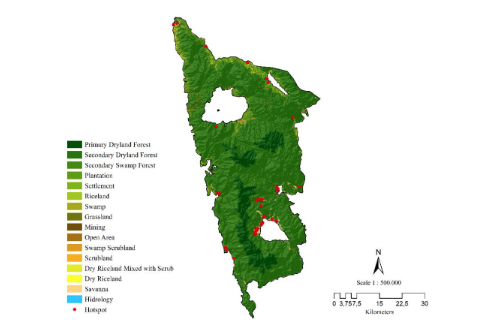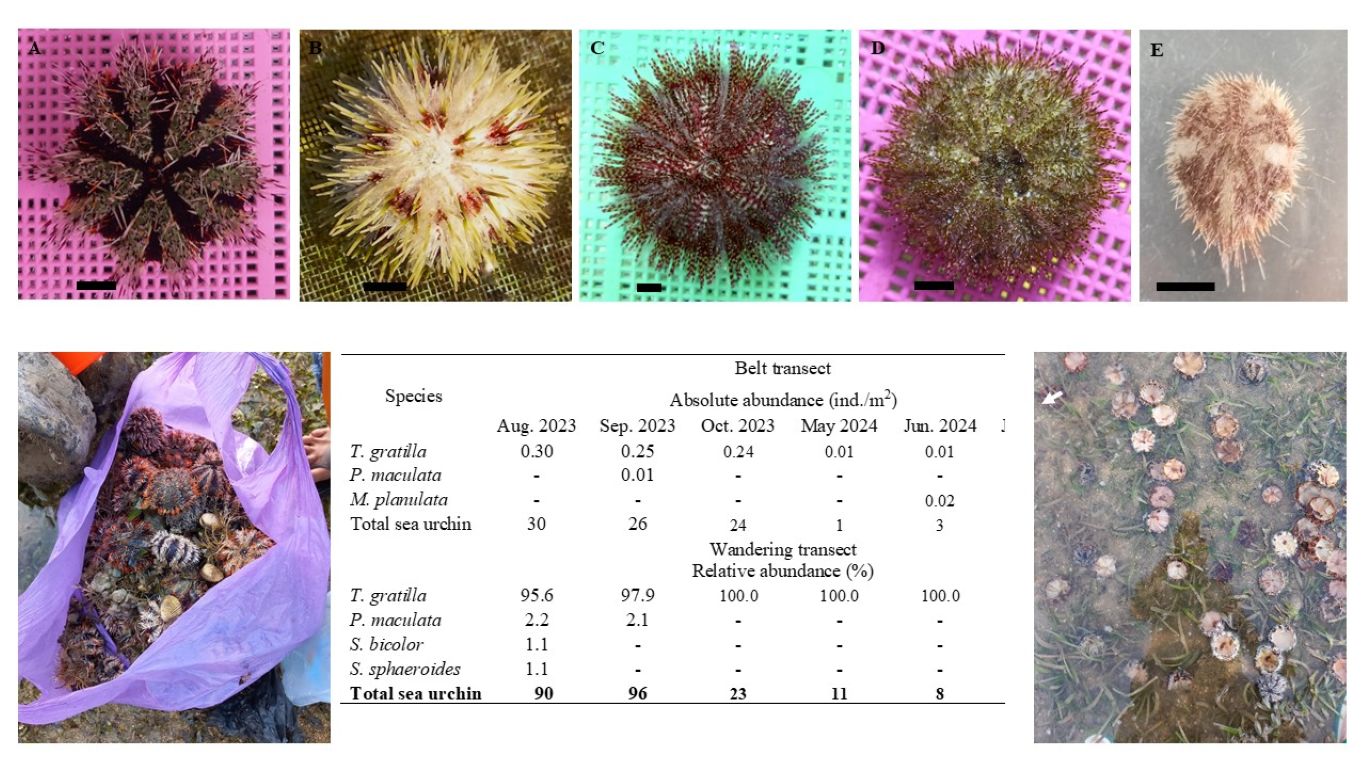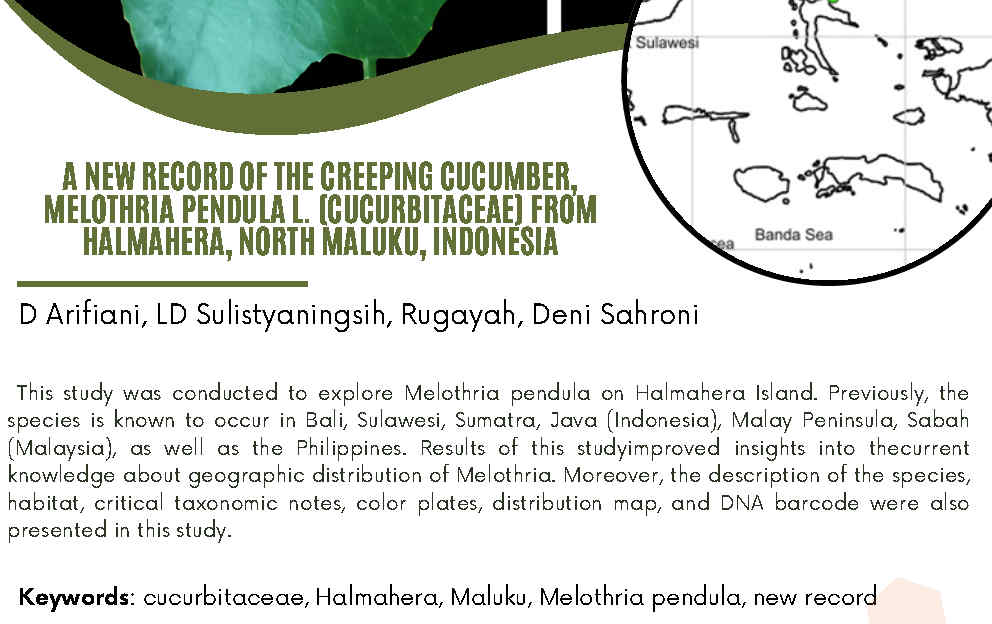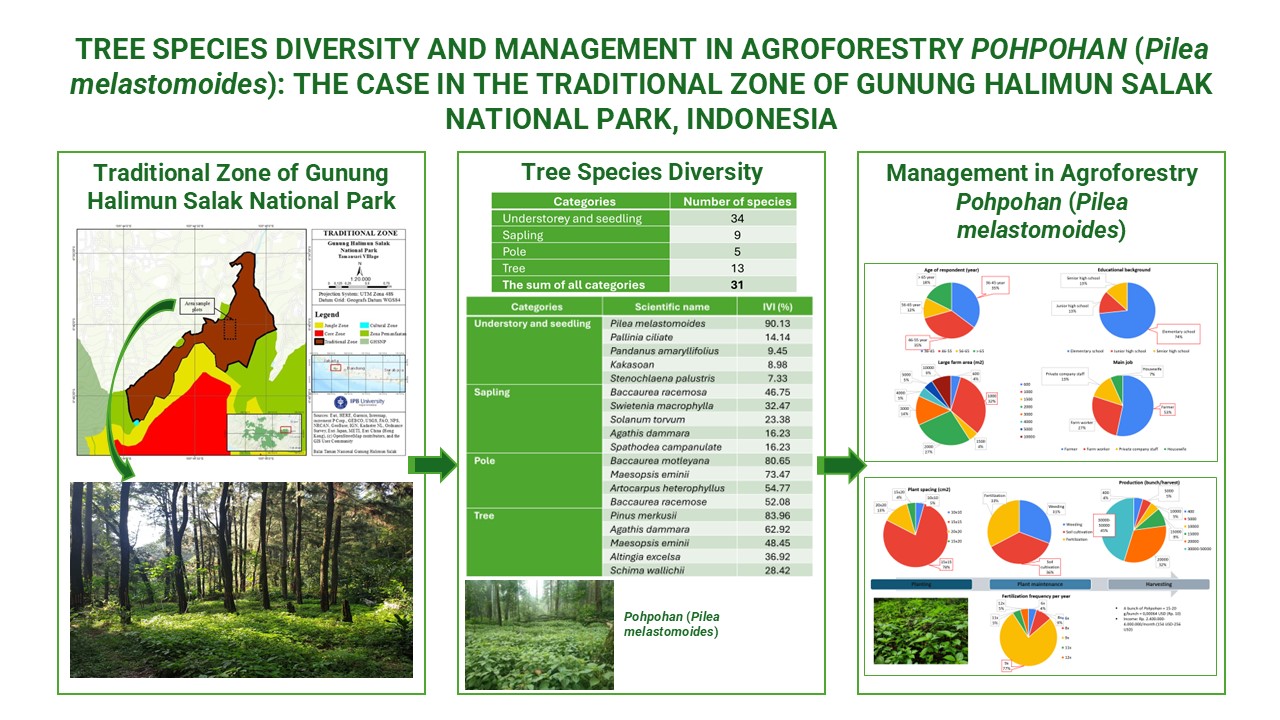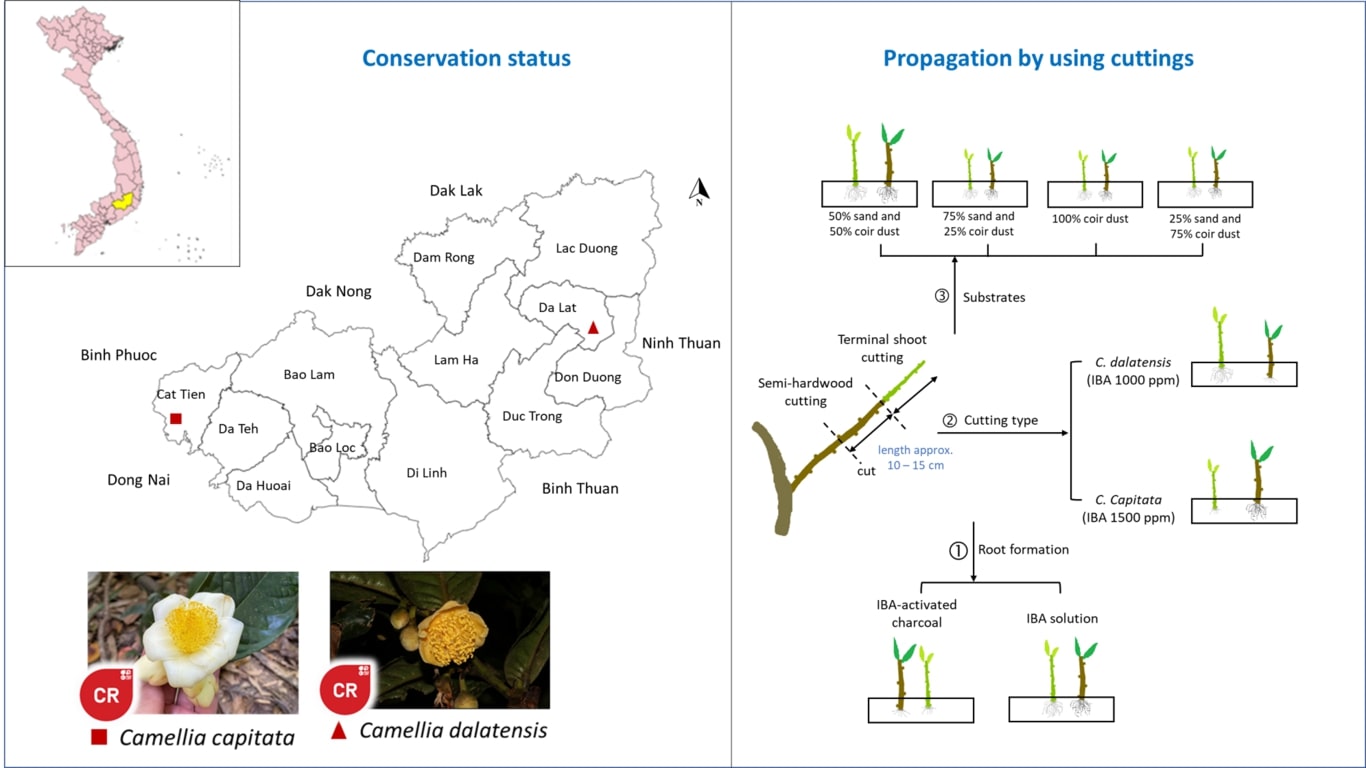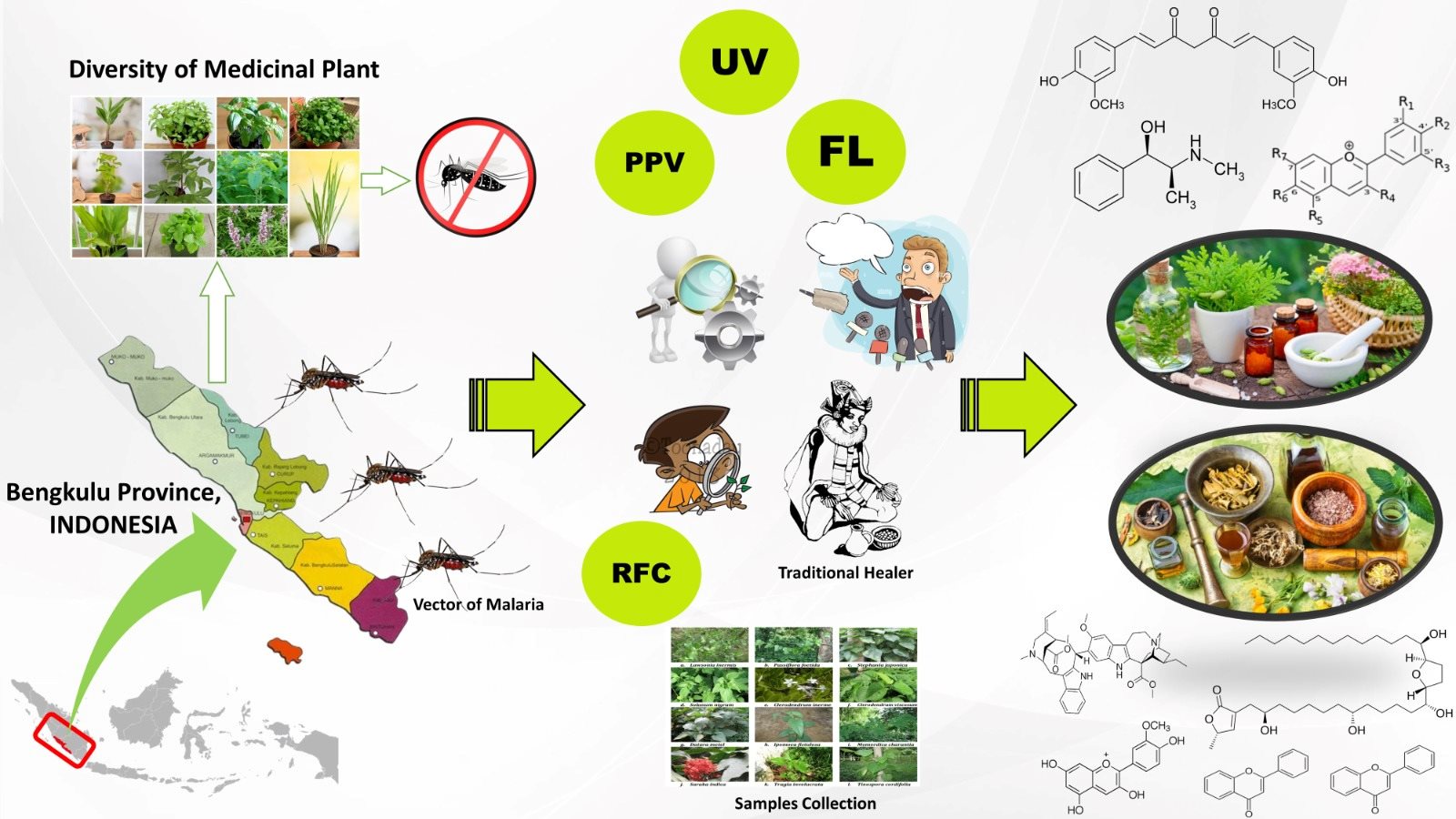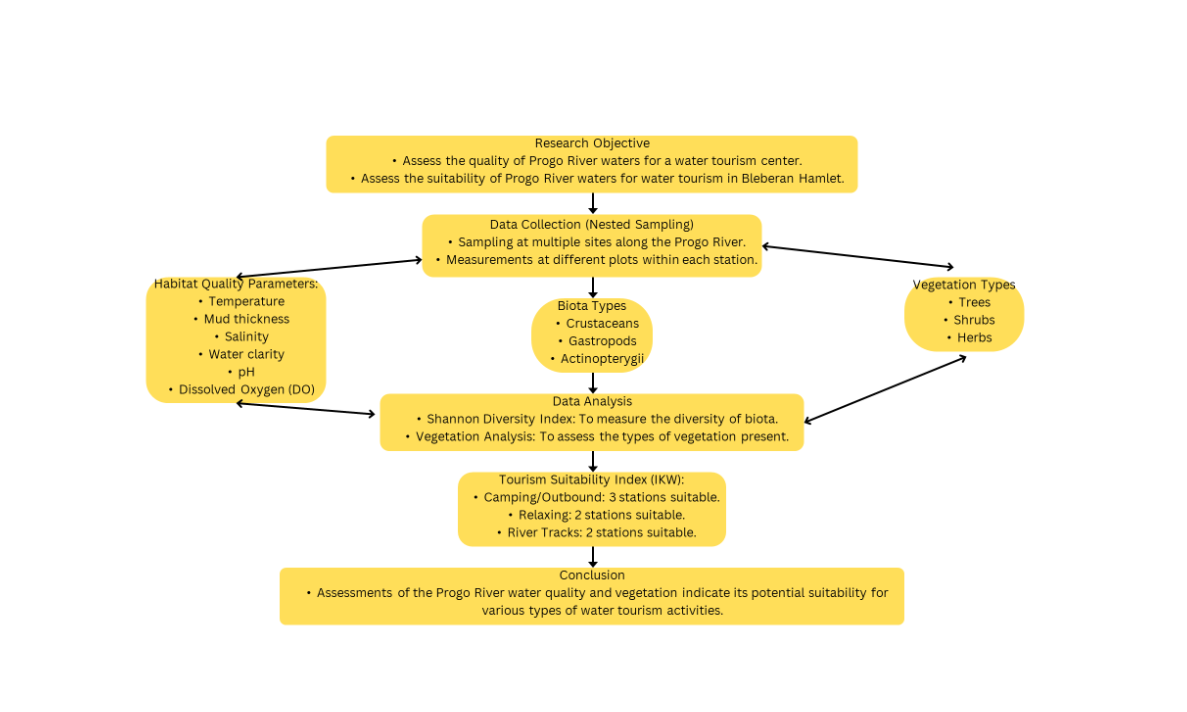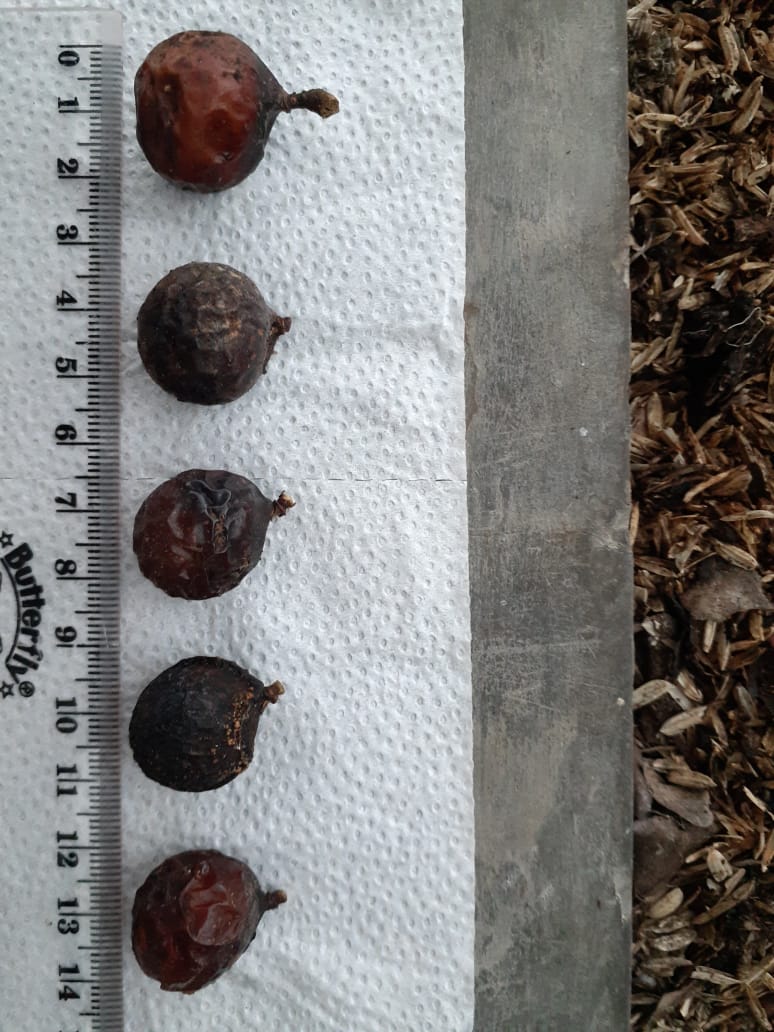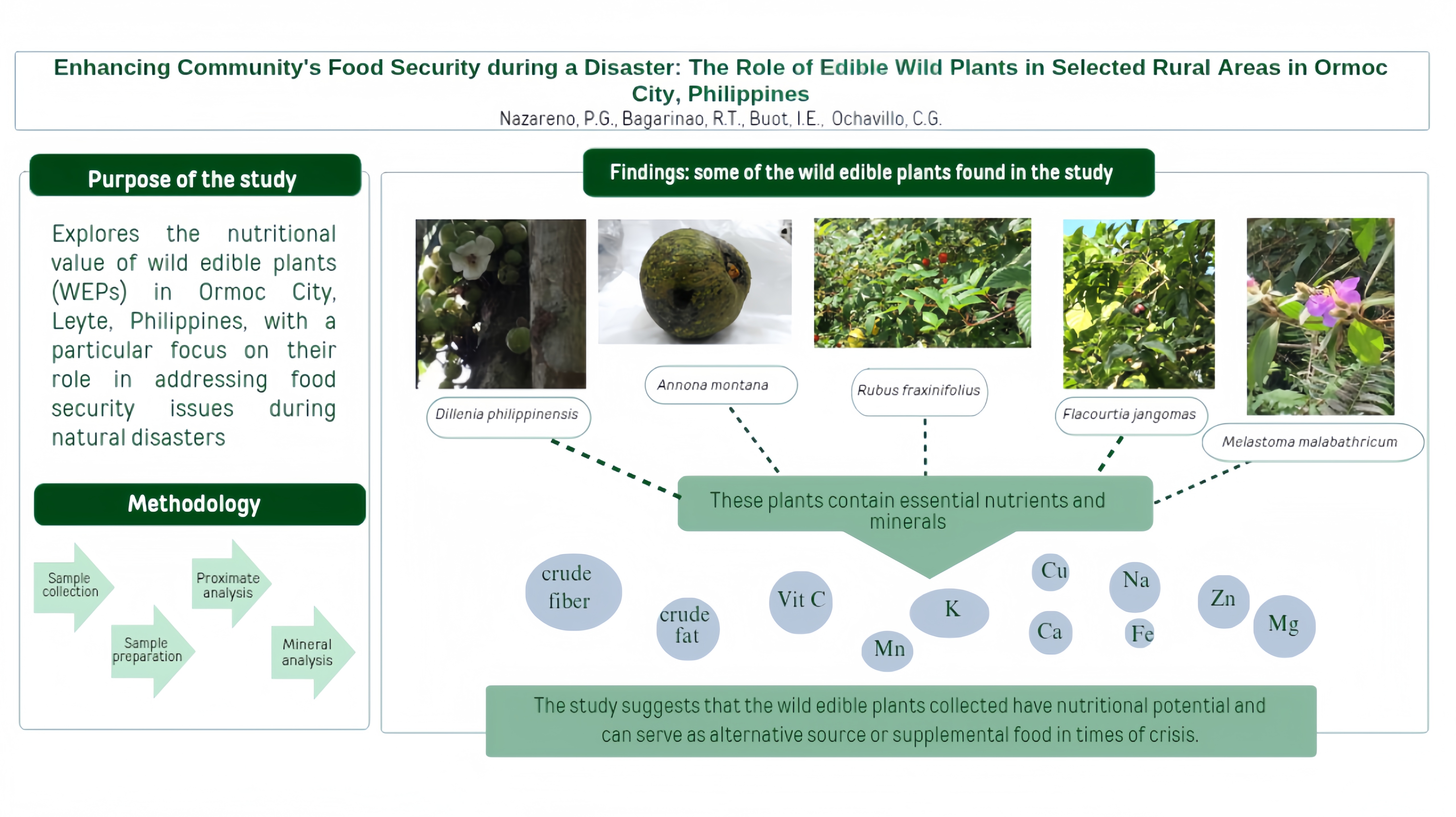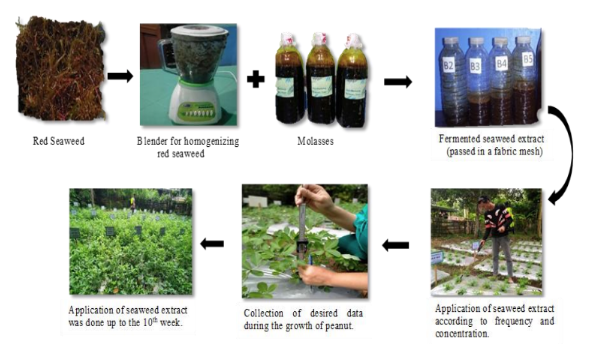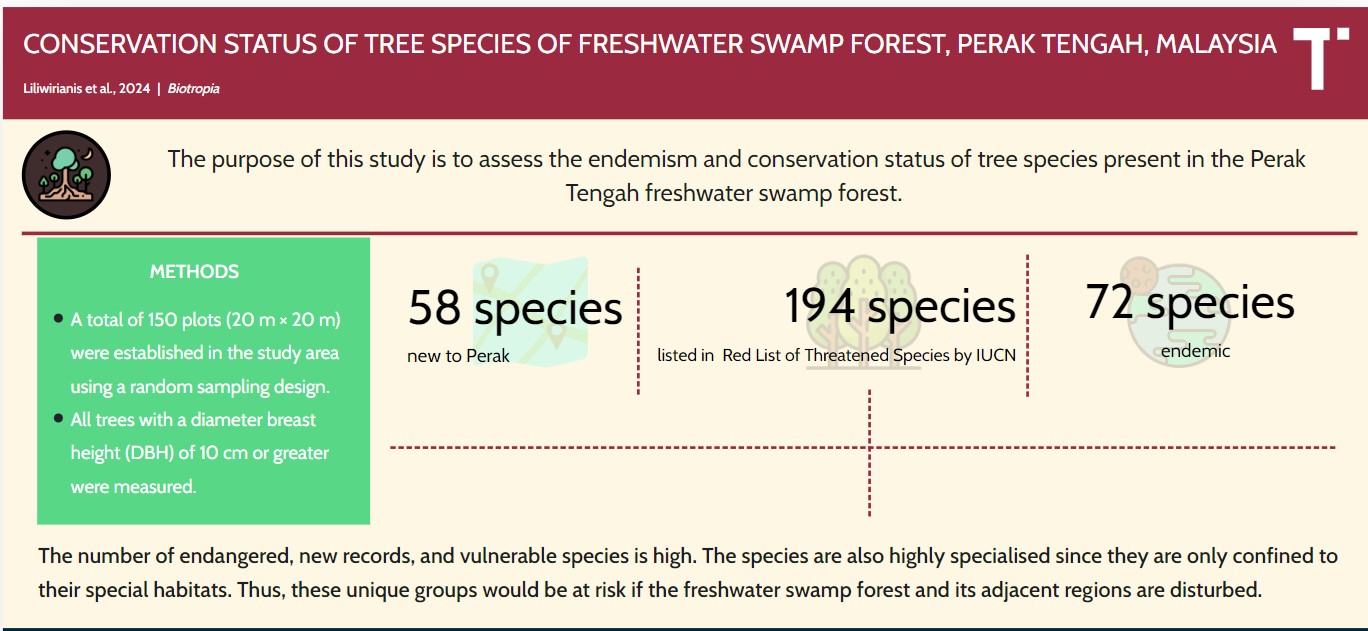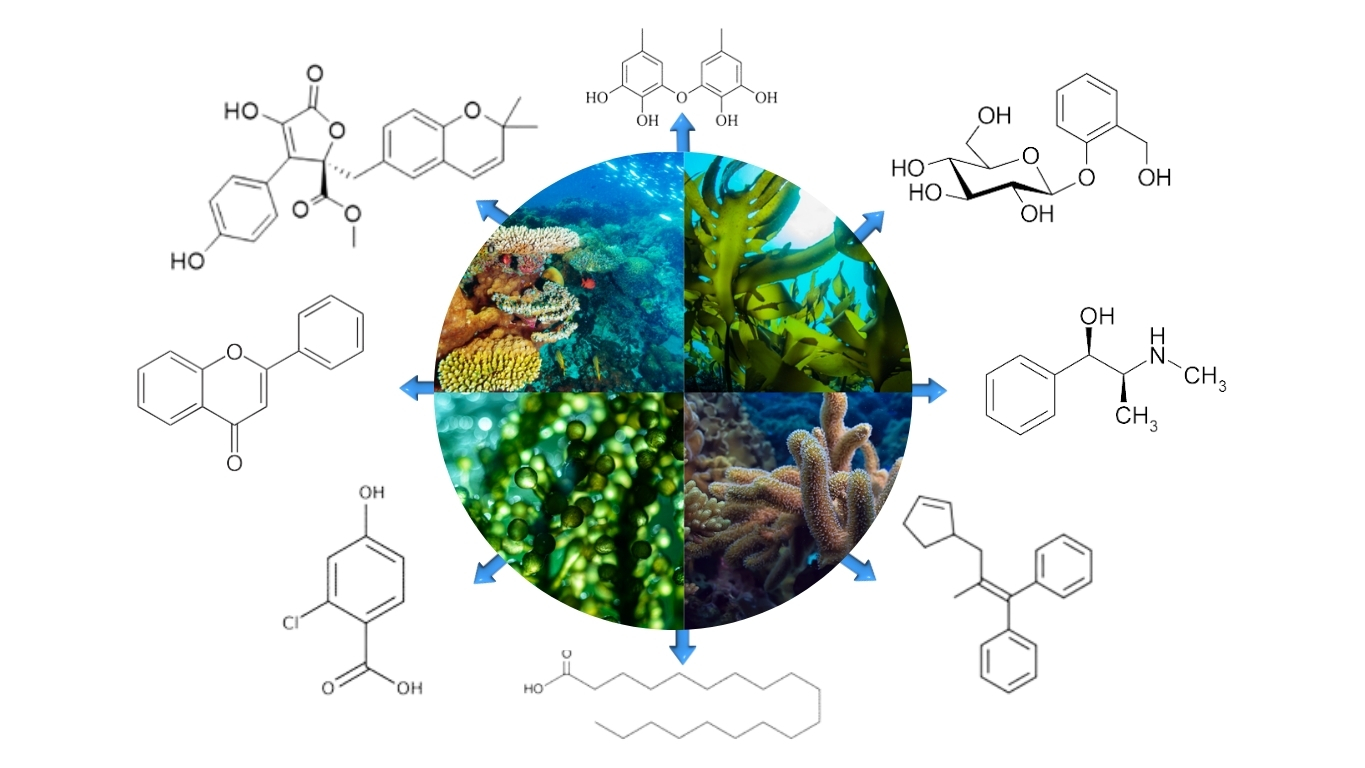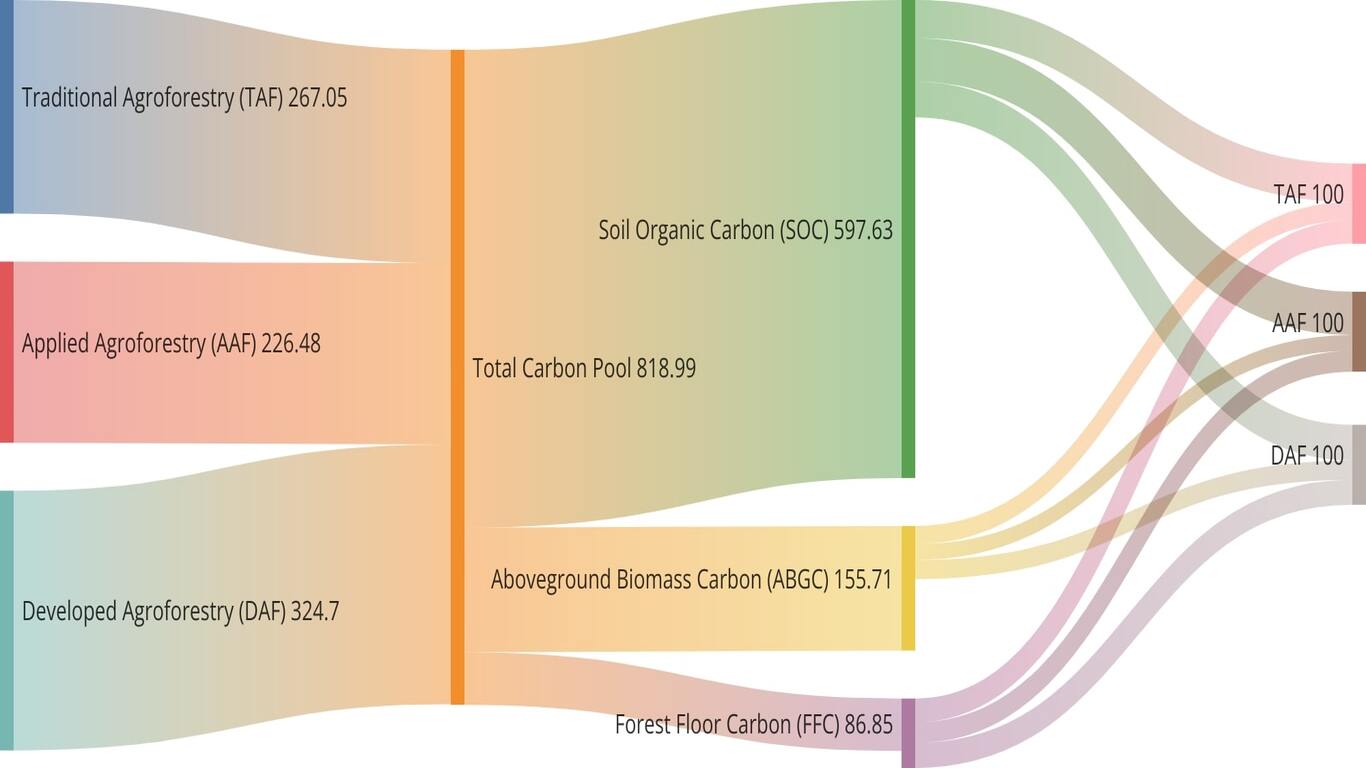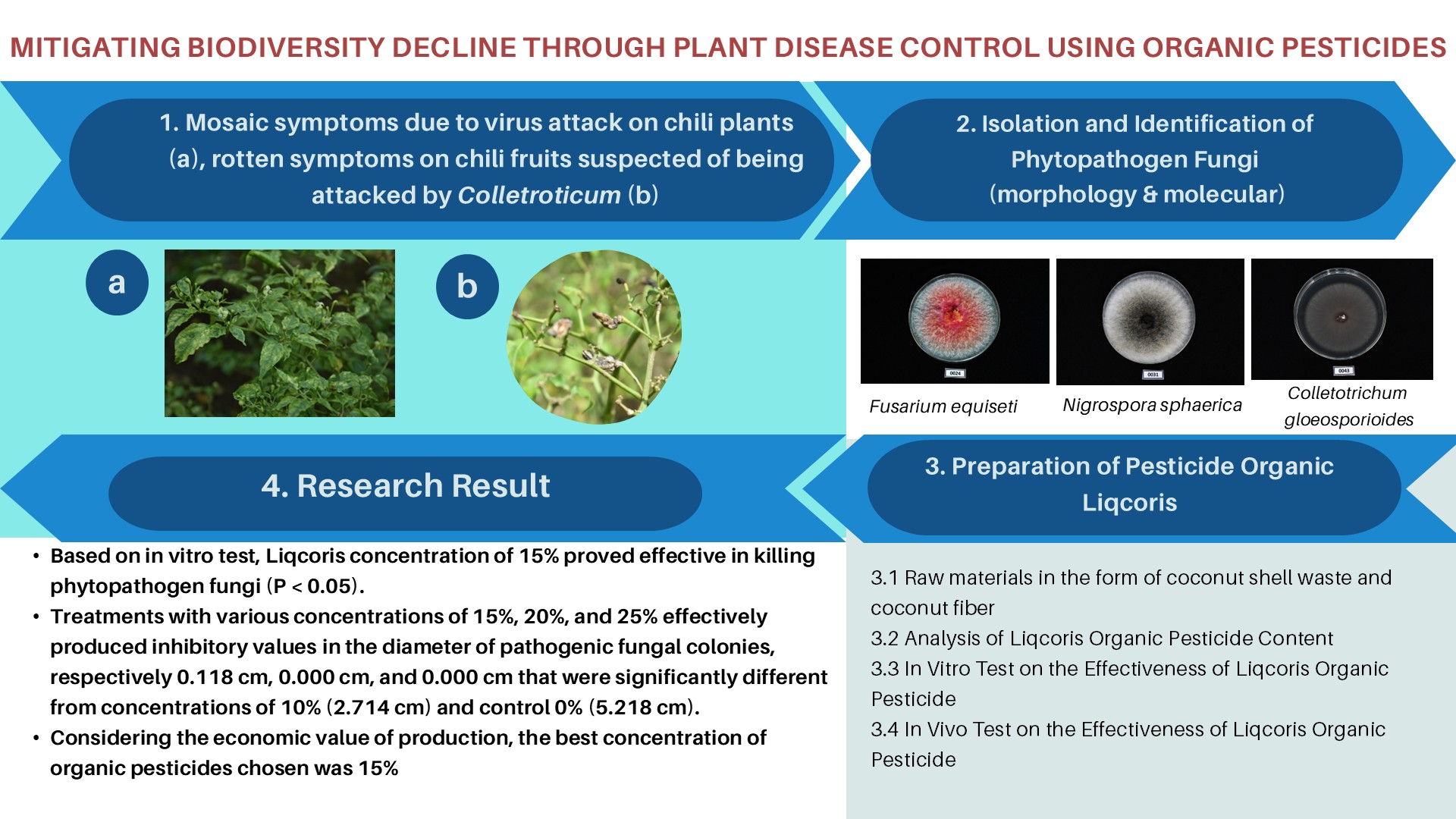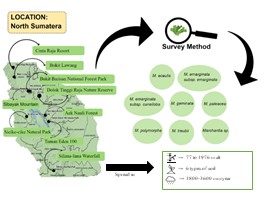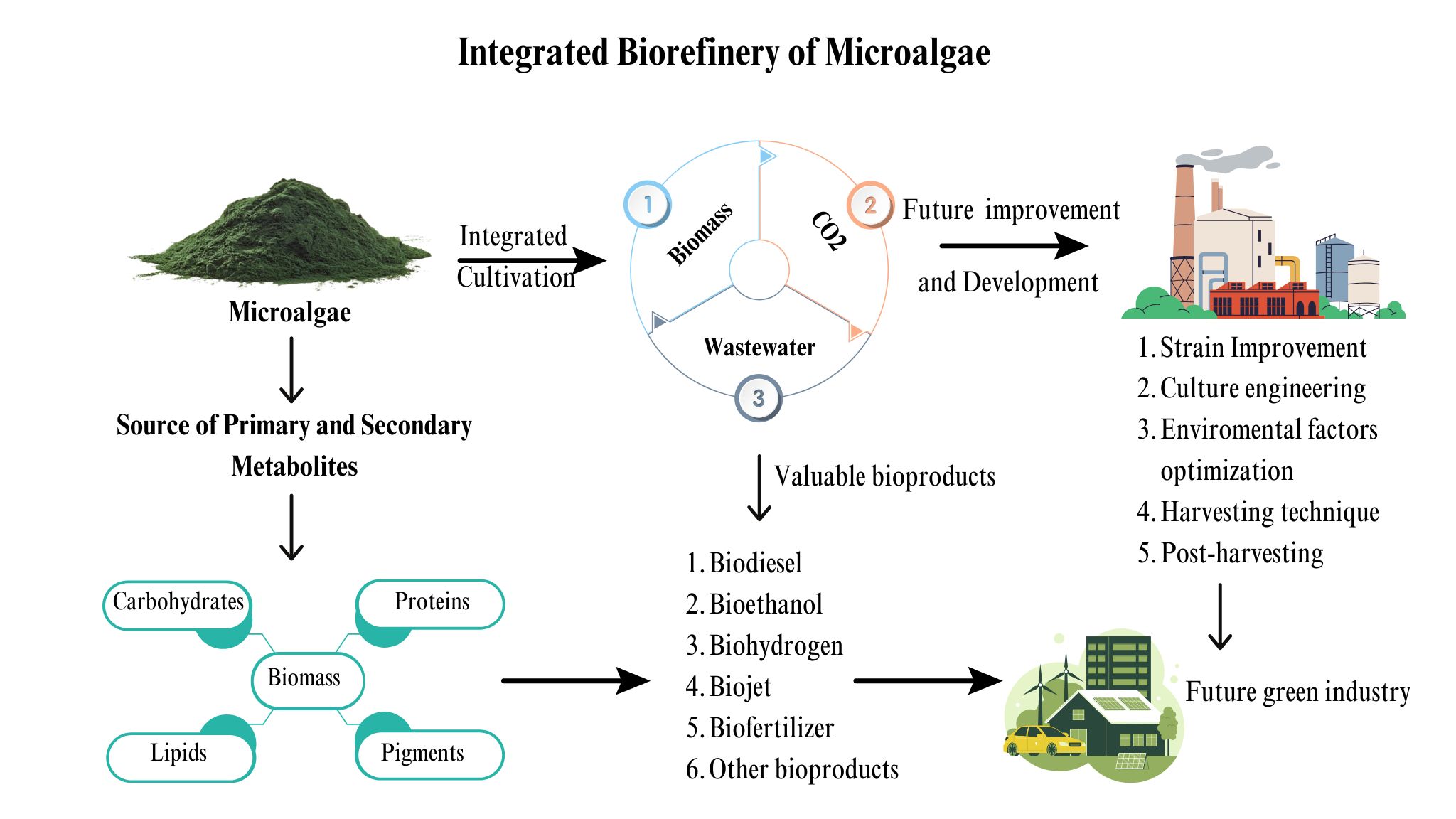The THE POTENCY OF CINNAMON (Cinnamomum burmanni Blume) LEAF EXTRACT AS A BIOPRESERVATIVE AGENT FOR FOOD SAFETY OF SATE LILIT
-

ARTICLE HIGLIGHTS
- Cinnamon leaf extract combats E. coli in traditional Balinese food.
- Natural preservative reduces harmful pathogens in sate lilit.
- Cinnamon extract offers a safer alternative to synthetic preservatives.
- Active compounds in cinnamon leaves inhibit bacterial growth.
- Effective biopreservative for enhancing food safety and quality.
ABSTRACT
Escherichia coli O157:H7 contamination of the meat used in preparing sate lilit, a favorite traditional food in Bali, Indonesia, has been a great concern for both local people and foreigners. Although C. burmanni has been included in its spice ingredients, active compounds that play a significant role in this pathogen have limitedly been elucidated. The main objectives of this research were to investigate the potency of this plant to control contaminants and elucidate possible compounds that prevent such contaminants by applying the disk diffusion method and LCMS analysis, respectively. The results showed that the leaf extract of this plant inhibited the in vitro growth of E. coli O157:7, with minimal inhibitory concentration (MIC) and LC50 values of 4% and 2.59%, respectively. The LCMS analysis chromatogram showed that the plant extract's most active fraction produced nine peaks, representing nine possible active compounds. Among those, three compounds (Azoxystrobin, Stigmatellin Y, and 2-arachidonoyl glycerol) were suspected of contributing to control contamination, especially by E. coli O157:H7.
Downloads
INTRODUCTION
Being one of the tourist islands in Indonesia, Bali is rich in various types of ethnic foods. Such kinds of foods (traditionally served along the streets in small stalls or modern restaurants) can easily be found in areas of tourist destinations in Bali. A specific characteristic of Balinese ethnic foods is the spicy ingredients used in the preparation. Sate lilit is a traditional Balinese Kebab and a favorite food in Bali, enjoyed by both locals and foreigners. Sate lilit has also been part of offerings in the Balinese religious rituals, such as temple festivals, Balinese wedding ceremonies, etc. The meat (beef, pork, chicken, or fish as the primary raw material) of the sate lilit is frequently contaminated by pathogenic microbes(Palupi et al., 2019)that can damage the quality of the sate lilit. These contaminated meats often become a medium for the pathogen to spread and cause food poisoning (foodborne disease outbreak).
Some researchers found that beef (a primary raw material of sate lilit) traded in traditional markets in Bali is frequently contaminated by pathogenic bacteria. For example,(Purni et al., 2020)reported that 39 beef samples collected from some traditional markets located in Denpasar City, Badung, and Klungkung regencies were contaminated by E. coli. Among those samples, 25.6% were infected by E. coli O157:H7, the causative agent of hemorrhagic diarrhea, due to its ability to produce Shiga-like toxins(Patil et al., 2022). Similar results were also reported by(Pinatih et al., 2021), who stated that this serotype of E. coli O157:H7 has been well-known to produce potent toxins identical to those made by Shigella dysentery type 1, and therefore it is often referred to as Shiga like a toxin. As sate lilit is not fully cooked, it has the potential to spread pathogenic microbes that lead to an outbreak.
The application of synthetic chemical-based preservatives has not been encouraged to cope with such pathogenic microbial contamination due to their many harmful side effects on human health. According to the Indonesian Food and Drug Administration (BPOM), food poisoning was considered to be the highest case of poisoning in Indonesia in 2012. Approximately 66,7% of such poisoning cases were due to the consumption of foods containing poisonous preservatives, such as formalin, boric acid, or textile dyes(Utomo & Kholifah, 2018). Based on those food poisoning cases due to the application of inappropriate preservative agents, the possible use of natural preservative agents extracted from plants has been intensively researched so that some alternative and safe food preservations can be invented.
The bark and leaf extracts of C. burmanni Blume have been applied as flavor enhancers in various foods in Indonesia. C. burmanni Blume is a wooden plant. Its height may reach 50 meters(Sujarwo & Keim, 2020). According to(Djarot et al., 2023), this plant's leaves and bark contain high levels of flavonoids, saponin, tannin, and alkaloids.(Mohamed et al., 2020)reported that the bark extract of this plant has the potential as an antibacterial agent. This is due to the antimicrobial effect of its essential oil, containing several active compounds, such as cinnamaldehyde, eugenol, cinnamic acid, and cinnamate(Plumeriastuti et al., 2019). The potential of C. burmanni essential oil to inhibit Staphylococcus aureus, Enterobacter spp., Pseudomonas aeruginosa, and Candida albicans was also reported by(Novita & Sutandhio, 2021). This background has opened the door for its use as an alternative agent in developing food preservatives.
Based on the above rationale, it is urgently needed to elucidate active compounds in the C. burmanni leaf extract that may play an essential role in controlling E. coli O157:H7 contamination before its use as an organic food preservative. This study focused on the leaf extract of the plant, because this part of the plant has been widely used as an important ingredient of sate lilit preparation in Bali. The results of our current research expectedly can be used to develop alternative food preservation methods to control pathogenic microbes (E. coli O157:H7 in particular) in ethnic Balinese food products.
MATERIALS AND METHOD
Extraction of C. burmanni Blume leaves
Mature leaves (located on rows of 4-9 from tips of branches) of C. burmanni Blume were collected from Bedugul village, Tabanan-Bali. These leaf samples were chopped, air dried at ambient temperature (25 – 33oC), powdered with a warring blender, macerated in 96% ethanol (Sigma Aldrich, Germany) in a ratio of 1:10 w/v, and filtered with 4 layers of Whatman no. 2 filter papers (pore size 8 µm). The filtrate was then evaporated in a vacuum rotary evaporator at 40ºC to obtain crude extract/pellet of the leaf extract and stored at 4oC before being used in the subsequent experiments. The crude extract obtained from this evaporation was considered to be 100% concentration.
Preparation of C. burmanni Blume crude extract
The crude extract of the plant leaves was diluted with 96% ethanol (Sigma-Aldrich, Germany) to obtain final concentrations of 20% (w/v), 15% (w/v), 10%, and 5% (w/v) by applying the following dilution formula:
V1. M1 = V2. M2
Where:
V₁ : Volume of the most concentrated extract (mL)
V₂ : Volume of the adjusted extract concentration (mL)
M₁ : Concentration of the most concentrated extract (% w/v)
M₂ : The adjusted extract concentration (% w/v).
Preparation of E. coli O157:H7 cell suspension
The strain of Escherichia coli O157:H7 was obtained from the stock
ryal S, Baniya M K, Danekhu K, Kunwar P, Gurung R, Koirala N. 2019. Total Phenolic Content, Flavonoid Content and Antioxidant Potential of Wild Vegetables from Western Nepal. Plants, 8(4): 96. DOI: https://doi.org/10.3390/plants8040096 DOI: https://doi.org/10.3390/plants8040096
Biharee A, Sharma A, Kumar A, Jaitak V. 2020. Antimicrobial flavonoids as a potential substitute for overcoming antimicrobial resistance. Fitoterapia, 14: 104720. DOI: https://doi.org/10.1016/j.fitote.2020.104720 DOI: https://doi.org/10.1016/j.fitote.2020.104720
Boopathi S, Vashisth R, Manoharan P, Mohanti, Jia AQA, Sivakumar R, Arockiaraj R. 2022. Bacillus subtilis BR4 derived stigmatellin Y interferes Pqs‐PqsR mediated quorum sensing system of Pseudomonas aeruginosa. J. of Basic Microbiology:1-14. DOI: http://dx.doi.org/10.1002/jobm.202200017 DOI: https://doi.org/10.1002/jobm.202200017
Chouinard F, Turcotte C, Guan X, Larose MC, Pirier S, Bouchard L, Provost V, Flamand L, Grandvaux N, Flamad N. 2013. 2-Arachidonoyl-glycerol- and arachidonic acid-stimulated neutrophils release antimicrobial effectors against E. coli, S. aureus, HSV-1, and RSV Journal of Leukocyte Biology 93: 267-276. DOI: https://doi.org/10.1189%2Fjlb.0412200 DOI: https://doi.org/10.1189/jlb.0412200
Dey P, Kundu A, Kumar A, Gupta M, Lee BM, Bhakta T, Dash S, Kim HS. 2020. Analysis of alkaloids (indole alkaloids, isoquinoline alkaloids, tropane alkaloids). In Recent Advances in Natural Products Analysis: 505–567, Elsevier. DOI: https://doi.org/10.1016/B978-0-12-816455-6.00015-9 DOI: https://doi.org/10.1016/B978-0-12-816455-6.00015-9
Didehdar M, Chegini Z, Tabaeian S P, Razavi S, Shariati A. 2022. Cinnamomum: The New Therapeutic Agents for Inhibition of Bacterial and Fungal Biofilm-Associated Infection. Frontiers in Cellular and Infection Microbiology, 12. DOI: https://doi.org/10.3389/fcimb.2022.930624 DOI: https://doi.org/10.3389/fcimb.2022.930624
Djarot P, Yulianita Y, Utami N F, Putra AM, Putri YIM, Muhardianty SM, Suciyani TA, Syaepulrohman A. 2023. Bioactivities and Chemical Compositions of Cinnamomum burmannii Bark Extracts (Lauraceae). Sustainability, 15(2), 1696. DOI: https://doi.org/10.3390/su15021696 DOI: https://doi.org/10.3390/su15021696
Gupta PK. 2020. Principles of Toxicology. In Problem Solving Questions in Toxicology: (pp. 27–45). Springer International Publishing. DOI: https://doi.org/10.1007/978-3-030-50409-0_3 DOI: https://doi.org/10.1007/978-3-030-50409-0_3
Hajam YA, Lone R, Kumar R. 2023. Role of Plant Phenolics Against Reactive Oxygen Species (ROS) Induced Oxidative Stress and Biochemical Alterations. In Plant Phenolics in Abiotic Stress Management: 125–147). Springer Nature Singapore. DOI: https://doi.org/10.1007/978-981-19-6426-8_7 DOI: https://doi.org/10.1007/978-981-19-6426-8_7
Huang W, Wang Y, Tian W, Cui X, Tu P, Li J, Shi S, Liu X. 2022. Biosynthesis Investigations of Terpenoid, Alkaloid, and Flavonoid Antimicrobial Agents Derived from Medicinal Plants. Antibiotics, 11(10), 1380. DOI: https://doi.org/10.3390/antibiotics11101380 DOI: https://doi.org/10.3390/antibiotics11101380
Jubair N, Rajagopal M, Chinnappan S, Abdullah NB, Fatima A. 2021. Review on the Antibacterial Mechanism of Plant-Derived Compounds against Multidrug-Resistant Bacteria (MDR). Evidence-Based Complementary and Alternative Medicine: 1–30. DOI: https://doi.org/10.1155/2021/3663315 DOI: https://doi.org/10.1155/2021/3663315
Kavya NM, Adil L, Senthilkumar P. 2021. A Review on Saponin Biosynthesis and its Transcriptomic Resources in Medicinal Plants. Plant Molecular Biology Reporter 39(4) 833–840. DOI: https://doi.org/10.1007/s11105-021-01293-8 DOI: https://doi.org/10.1007/s11105-021-01293-8
Malik, S K. 2023. Qualitative and Quantitative Estimation of Terpenoid Contents in Some Important Plants of Punjab, Pakistan. Pakistan Journal of Science 69(2): 150 - 154. DOI: https://doi.org/10.57041/pjs.v69i2.364 DOI: https://doi.org/10.57041/pjs.v69i2.364
Mohamed EA, Abdur R, Sadeek AMM. 2020. Cinnamon bark as antibacterial agent: A mini-review. GSC Biological and Pharmaceutical Sciences 10(1): 103–108. DOI: https://doi.org/10.30574/gscbps.2020.10.1.0012 DOI: https://doi.org/10.30574/gscbps.2020.10.1.0012
Novita BD, Sutandhio S. 2021. The Effect of Cinnamomum burmannii Water Extraction Against Staphylococcus aureus, Enterobacter spp., Pseudomonas aeruginosa, and Candida albicans: In Vitro Study. Folia Medica Indonesiana 55(4), 285. DOI: https://doi.org/10.20473/fmi.v55i4.24449 DOI: https://doi.org/10.20473/fmi.v55i4.24449
Palupi MF, Wibawan IWT, Sudarnika E, Maheshwari H, and Darusman HS. 2019. Prevalence of mcr-1 Colistin Resistance Gene in Escherichia coli Along the Broiler Meat Supply Chain in Indonesia. Biotropia 26(2), 143–153. DOI: https://doi.org/10.11598/btb.2019.26.2.1054 DOI: https://doi.org/10.11598/btb.2019.26.2.1054
Parisa N, Islami RN, Amalia E, Mariana M, Rasyid RSP. 2019. Antibacterial Activity of Cinnamon Extract (Cinnamomum burmannii) against Staphylococcus aureus and Escherichia coli In Vitro. Bioscientia Medicina : Journal of Biomedicine and Translational Research 3(2): 19–28. DOI: https://doi.org/10.32539/bsm.v3i2.85 DOI: https://doi.org/10.32539/bsm.v3i2.85
Patil S, Lopes BS, Liu S, Wen F. 2022. Emergence of Shiga toxin-producing Escherichia coli O157:H7 in paediatric patients in Shenzhen, China. The Lancet Microbe 3(11): e809. DOI: https://doi.org/10.1016/S2666-5247(22)00223-3 DOI: https://doi.org/10.1016/S2666-5247(22)00223-3
Pinatih KJP, Suardana IW, Widiasih DA, Suharsono H. 2021. Shiga-Like Toxin Produced by Local Isolates of Escherichia coli O157:H7 Induces Apoptosis of the T47 Breast Cancer Cell Line. Breast Cancer: Basic and Clinical Research 15: 117822342110101. DOI: https://doi.org/10.1177/11782234211010120 DOI: https://doi.org/10.1177/11782234211010120
Plumeriastuti H, Budiastuti B, Effendi M, Budiarto B. 2019. Identification of bioactive compound of the essential oils of Cinnamomum burmannii from several areas in Indonesia by gas chromatography-mass spectrometry method for antidiabetic potential. National Journal of Physiology, Pharmacy and Pharmacology 0,1. DOI: https://doi.org/10.5455/njppp.2019.9.1236702022019 DOI: https://doi.org/10.5455/njppp.2019.9.1236702022019
Purni NW, Kawuri R, Darmayasa IBG. 2020. Elimination of Escherichia coli O157:H7 Isolated from Beef which was Collected from Slaughtering House and Traditional Markets. Jurnal Metamorfosa 7(2):199-204. DOI: 10.24843/metamorfosa.2020.v07.i02.p08 DOI: https://doi.org/10.24843/metamorfosa.2020.v07.i02.p08
Raji P, Samrot AV, Keerthana D, Karishma S. 2019. Antibacterial Activity of Alkaloids, Flavonoids, Saponins and Tannins Mediated Green Synthesised Silver Nanoparticles Against Pseudomonas aeruginosa and Bacillus subtilis. Journal of Cluster Science 30(4): 881–895. DOI: https://doi.org/10.1007/s10876-019-01547-2. DOI: https://doi.org/10.1007/s10876-019-01547-2
Rastina, Mirnawati S, Ietje M. 2015. Antibacterial Activity of Ethanol Extract of Murraya koenigii Leaves on Staphylococcus aureus, Escherichia coli, and Pseudomonas sp. Jurnal Kedokteran Hewan 9(2): 185-188. DOI: https://doi.org/10.21157/j.ked.hewan.v9i2.2842 DOI: https://doi.org/10.21157/j.ked.hewan.v9i2.2842
Santiago LÂM, Neto RN M, Santos Ataíde AC, Fonseca DCSC, Soares EFA, de Sá Sousa JC, Mondego-Oliveira R, Ribeiro RM, de Sousa Cartágenes MS, Lima-Neto LG, Carvalho RC, de Sousa EM. 2021. Flavonoids, alkaloids and saponins: are these plant-derived compounds an alternative to the treatment of rheumatoid arthritis? A literature review. Clinical Phytoscience 7(1): 58. DOI: https://doi.org/10.1186/s40816-021-00291-3 DOI: https://doi.org/10.1186/s40816-021-00291-3
Sri Kosnayani A, Badriah L, El Akbar RR, Kurnia Hidayat, A. 2019. A Qualitative Analysis of Tannin Type and Tannin Content in Meniran Tea (Phyllanthus Niruri Linn.) with Permanganometry Method. Proceedings of the 5th International Conference on Health Sciences (ICHS 2018). DOI: https://doi.org/10.2991/ichs-18.2019.4 DOI: https://doi.org/10.2991/ichs-18.2019.4
Sujarwo W, Keim AP. 2020. Cinnamomum burmanni (Nees & T.Nees) Blume Lauraceae: 1 – 7. DOI: https://doi.org/10.1007/978-3-030-14116-5_174-1 DOI: https://doi.org/10.1007/978-3-030-14116-5_174-2
Sun M, Wang H, Shi C, Li J, Cai L, Xiang L, Liu T, Goodwin PH, Chen X, Wang L. 2023. Effect of azoxystrobin on tobacco leaf microbial composition and diversity. Frontiers in Plant Science 13. DOI: https://doi.org/10.3389/fpls.2022.1101039 DOI: https://doi.org/10.3389/fpls.2022.1101039
Tungmunnithum D, Thongboonyou A, Pholboon A, Yangsabai A. 2018. Flavonoids and Other Phenolic Compounds from Medicinal Plants for Pharmaceutical and Medical Aspects: An Overview. Medicines 5(3): 93. DOI: https://doi.org/10.3390/medicines5030093 DOI: https://doi.org/10.3390/medicines5030093
Ullah A, Munir S, Badshah SL, Khan N, Ghani L, Poulson BG, Emwas AH, Jaremko M. 2020. Important Flavonoids and Their Role as a Therapeutic Agent. Molecules 25(22): 5243. DOI: https://doi.org/10.3390/molecules25225243 DOI: https://doi.org/10.3390/molecules25225243
Utomo D, Kholifah S. 2018. Tests of Boracks dan Formalin on Snacks Collected from Food Stalls Around the University of Yudharta Pasuruan. Teknologi Pangan: Media Informasi Dan Komunikasi Ilmiah Teknologi Pertanian 9(1). DOI: https://doi.org/10.35891/tp.v9i1.933 DOI: https://doi.org/10.35891/tp.v9i1.933
Wolf JC, Segner HE. 2023. Hazards of current concentration-setting practices in environmental toxicology studies. Critical Reviews in Toxicology 53(5): 297–310. DOI: https://doi.org/10.1080/10408444.2023.2229372 DOI: https://doi.org/10.1080/10408444.2023.2229372
Yuan G, Guan Y, Yi H, Lai S, Sun Y, Cao S. 2021. Antibacterial activity and mechanism of plant flavonoids to gram-positive bacteria predicted from their lipophilicities. Scientific Reports 11(1): 10471. DOI: https://doi.org/10.1038/s41598-021-90035-7 DOI: https://doi.org/10.1038/s41598-021-90035-7
Copyright (c) 2024 Ida Bagus Gede Darmayasa, Yan Ramona, Ketut, -, Luh, Kalidas

This work is licensed under a Creative Commons Attribution-NonCommercial-NoDerivatives 4.0 International License.
Authors who publish with this journal agree with the following terms:
- Authors retain copyright and grant the journal right of first publication, with the work 1 year after publication simultaneously licensed under a Creative Commons attribution-noncommerical-noderivates 4.0 International License that allows others to share, copy and redistribute the work in any medium or format, but only where the use is for non-commercial purposes and an acknowledgement of the work's authorship and initial publication in this journal is mentioned.
- Authors are able to enter into separate, additional contractual arrangements for the non-exclusive distribution of the journal's published version of the work (e.g., post it to an institutional repository or publish it in a book), with an acknowledgement of its initial publication in this journal.
- Authors are permitted and encouraged to post their work online (e.g., in institutional repositories or on their website) prior to and during the submission process, as it can lead to productive exchanges, as well as earlier and greater citation of published work (See The Effect of Open Access).









